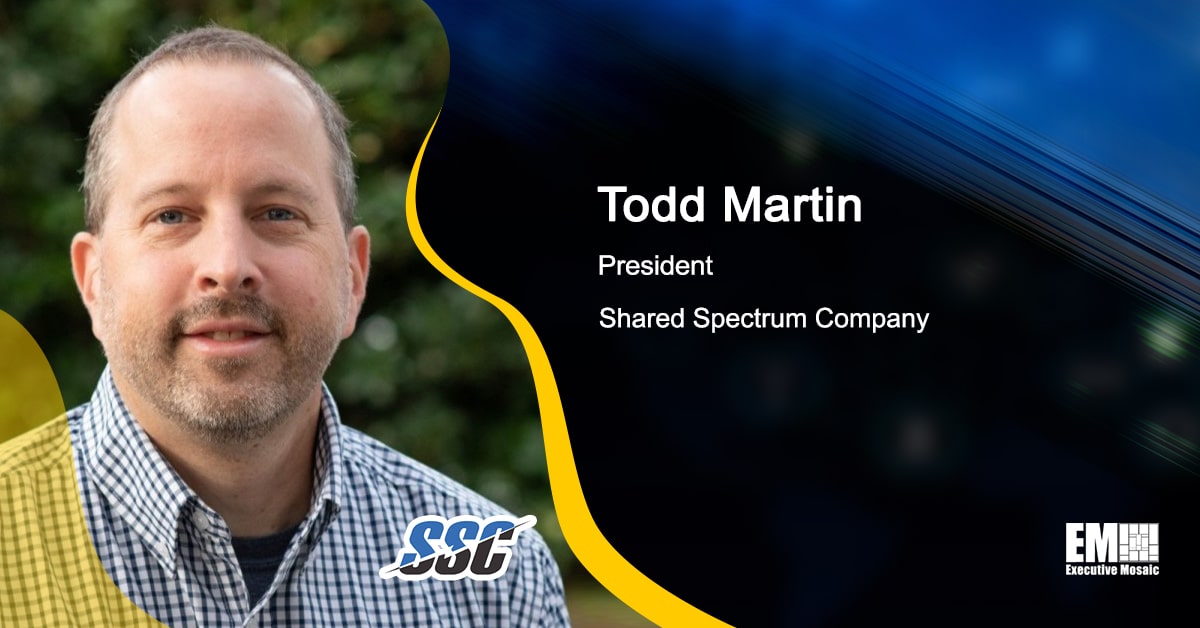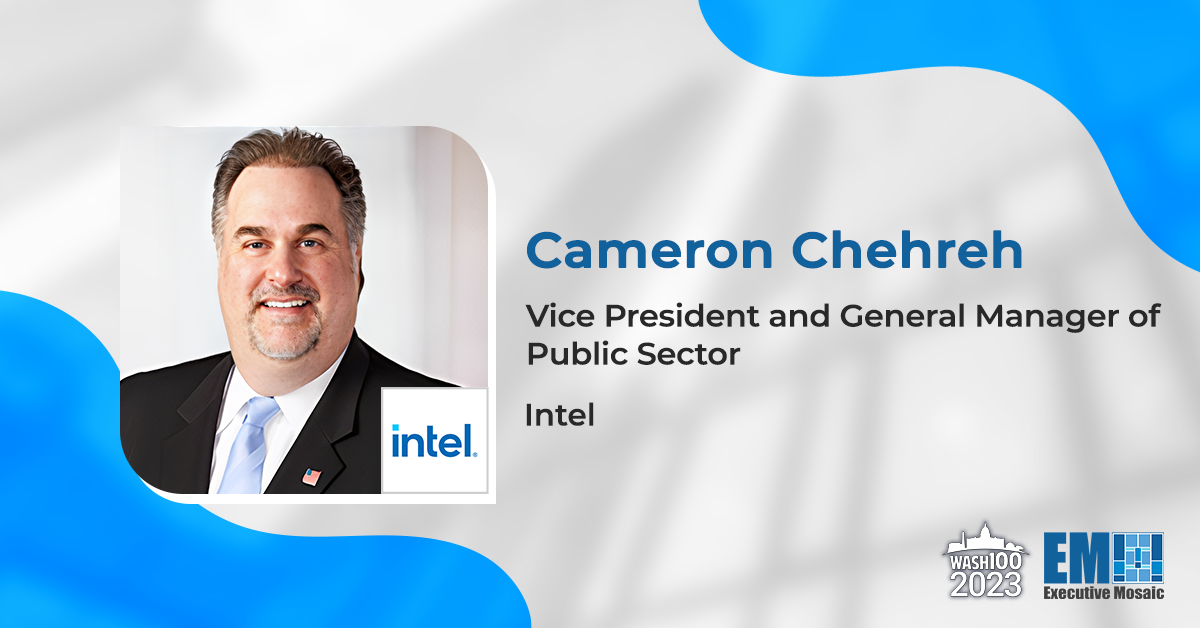5G paved the way for groundbreaking developments and advancements in communications networks over the past few years. Now, with the emergence of 6G and NextG, organizations across the public and private sectors are harnessing the power of spectrum to propel the country into a new era of networking.
GovCon Wire spoke with Todd Martin, president of Shared Spectrum Company, to learn more about what’s next for 5G, how organizations are responding to the proliferation of sensors and which new technologies are influencing the next generation of networking.
Martin’s more than 30 years in the GovCon industry includes decades of experience as an engineer and going on six years with Shared Spectrum Company. Prior to his current role, Martin’s projects have spanned subjects and technologies such as adaptive wireless communications and networking, electronic warfare, information fusion and more.
Read Todd Martin’s full Executive Spotlight interview below.
We’re seeing the emergence of 6G and what’s being referred to as “NextG.” As technology develops, what do you see on the horizon for 5G?
We see DOD’s push into 5G/6G/NextG as the beginning of a long-term effort to capitalize on technology investments made by the private sector. For decades, the defense sector drove technology innovations that were then repurposed for commercial use — think of GPS, the internet and radar. The commercial tech boom in the past 20 years has disrupted that model with the private sector having a much larger capacity for technology development than government R&D. This trend will continue for decades, so understanding how to adopt commercial technologies for DOD uses is essential.
At SSC, we’re working with the DOD to evaluate and implement spectrum sharing in 5G networks to allow sharing between commercial and DOD systems. We’re currently integrating our algorithms into 5G systems and will be conducting field experiments in the coming months. We’ll continue working with DOD and our industry partners to use those results to inform 5G/6G/NextG standards, designs and implementations.
What role does 5G play in connecting Internet of Things devices and providing connectivity at the tactical edge? How do you think those capabilities can be improved?
5G was designed specifically to look at how do we have a world of connected everything? Whether it’s an appliance at the home, or in a DOD context, whether it’s each vehicle or platform has multiple connection points in it, or monitoring the health and status of a vehicle or a communications payload for maintenance purposes. It’s looking at how we take these high bandwidth and low bandwidth requirements in terms of latency and speed, along with all these different needs and apply them across a common network, whether through network slicing or some other technique.
Previous versions of networking like 3G and 4G were not built so much from that ground up perspective. So I see as we’re going forward into 6G and NextG, we’re building on that understanding and then adapting that into the future standards for 6G and beyond.
We live in a world where omnipresent sensors track people, organizations, vehicles and systems all around the world in both the physical and virtual realms. How is your organization adapting and responding to the proliferation of sensors and the rapid expansion of the Internet of Things?
This really feeds into the core of our company and the core of our technology. SSC is developing capabilities that implement electromagnetic spectrum maneuver as called out in DOD’s Spectrum Superiority Strategy. We recognize that in order to connect all these devices and get the information from point to point, it takes access to spectrum. But the more devices we add in, the more spectrum demand there is.
How can we develop techniques that allow all these devices and all this wireless connectivity within the limited amount of spectrum that’s available? There are a bunch of different ways we might think about doing that, but that’s really at the heart of what we do. Our focus has been primarily on the DOD side, but as we see the requirement for spectrum sharing between DOD and commercial and the growth in both of those areas, it’s clear that spectrum sharing is becoming the new normal — especially from a decentralized standpoint where we have multiple users who need to be able to share that same spectrum resource.
We need to look at how to increase the capacity for numbers of users and numbers of connected things within the available spectrum to allow economic growth and also national security. We need to continue to do tests and training of advanced systems. DOD systems are going to continue to demand more spectrum too, and we can’t expect them to just stay constrained as they look to leverage new technologies and advance new capabilities.
What we’re also seeing is an intersection or connection between DOD’s Spectrum Superiority Strategy and JADC2. The Spectrum Superiority Strategy looks to make sure our forces can get access to spectrum when they need it, where they need it, reliably and deny the adversary to do the same. JADC2 looks at how we connect all these pieces together — different platforms, different users, different systems — and be able to exchange that data reliably and robustly.
As we look at how that happens at the edge, now we begin to see this intersection between being able to do dynamic spectrum allocation and being able to coordinate that with even the electronic warfare aspect of how we use spectrum.
The lessons being learned from the war in Ukraine point to the necessity of dynamic EMS capabilities in any future engagement, and high-visibility initiatives such as JADC2 cannot succeed without it.
This gets into the spectrum maneuver domain that really connects all these pieces together, and that’s really an area of growth for us. It’s really an exciting time to see all those things come together and be able to push those forward. At SSC, we’re integrating and testing a swarm-based sensing system deployed on sUAS. We’re also demonstrating how sensing at the tactical edge enables spectrum maneuver for resilient communications and informing electronic warfare operations.
Does dynamic spectrum allocation intersect with technologies like AI/ML?
There are certainly aspects to that in terms of where AI and machine learning can be applied. With some of the work we do, there are artificial intelligence techniques embedded. I would expect that area to grow as we learn more about which processes can be better done by AI or machine learning, what techniques can be applied and where we need to stick to doing perhaps more classical signal processing. There’s going to be a lot of evolution happening over the coming years as we learn how best to build these systems and what’s needed.
Which emerging technologies do you anticipate will have the greatest impact on the federal landscape in the next few years?
As we try to modernize our radio systems, networks and electronics, we’re going to see a focus on building them in a way that allows this adaptation. How do we leverage a lot of the work that’s being done not just on the processing chips, but also on the core components in the electronics to make systems more flexible, more dynamic and more adaptable in the spectrum? At SSC, we’re leveraging commercial technologies for creating low-cost radio platforms while meeting very strict performance specifications. We’re delivering a batch of prototype radios to a customer for evaluation in the coming weeks. We expect to see continued and rapid growth in this area for several years.






